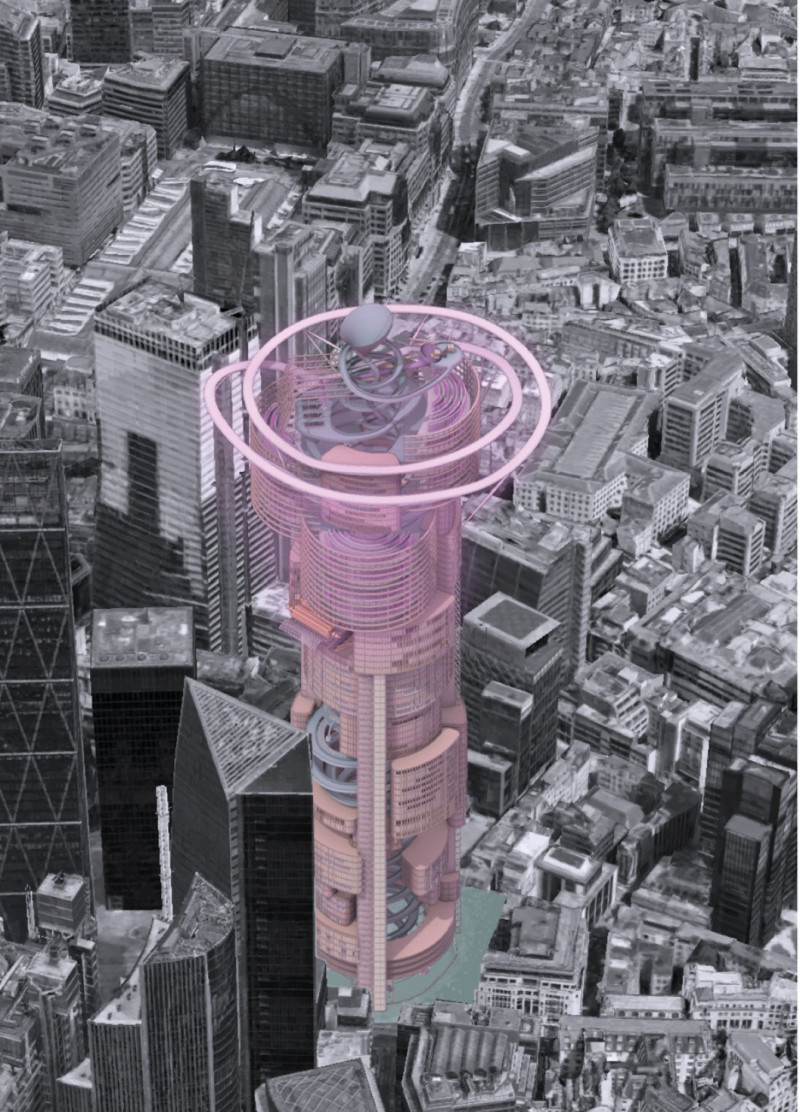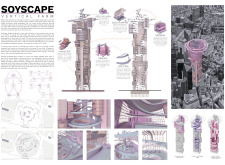5 key facts about this project
The SoyScape project is an urban agriculture initiative located at 100 Leadenhall Street in London. The design aims to incorporate vertical farming within the city, with a focus on sustainability and local food production. By reducing food miles and emissions related to food imports, the project underscores the importance of reconnecting city dwellers with their food sources.
Design Concept
At the core of SoyScape is the practice of vertical farming. This approach supports growing food in a controlled environment, which helps to reduce water use dramatically. It is reported that vertical farming in this design can use up to 95% less water compared to traditional farming methods. By utilizing vertical space, the project takes advantage of limited land in urban areas, making it possible to produce food right where people live.
Public Integration
The design includes a winding ramp that enhances accessibility to various public spaces such as cafes, shops, and workspaces. This ramp allows visitors to engage with the farming processes as they walk through the building. The layout encourages individuals to connect with the agricultural journey, making the experience of seeing how food is produced both informative and engaging.
Green Spaces
SoyScape also addresses the significant lack of green spaces in the City of London. The design integrates both outdoor and indoor gardens that provide areas for relaxation and enjoyment. These spaces not only support biodiversity but also contribute to the well-being of residents and workers in the busy urban environment. By introducing greenery within the daily lives of city inhabitants, the project helps bridge the gap between urban life and nature.
Farming Operations
The farming operations are designed for high efficiency and include several innovative features. Drones deliver seeds and supplies directly to the facility. Once seeds arrive, they are germinated in tubes for about one week, after which they are transplanted into larger growing environments. With LED lights and essential nutrients supporting their growth, the plants are managed carefully throughout the process. Harvested soybeans are ground into soy milk, and leftover material is repurposed, ensuring minimal waste.
The thoughtful design reveals a focus on community involvement and environmental care. The visible square dedicated to growing soy beans enhances the overall function and appearance of the building, making the farming process an integral part of the urban landscape.



















































